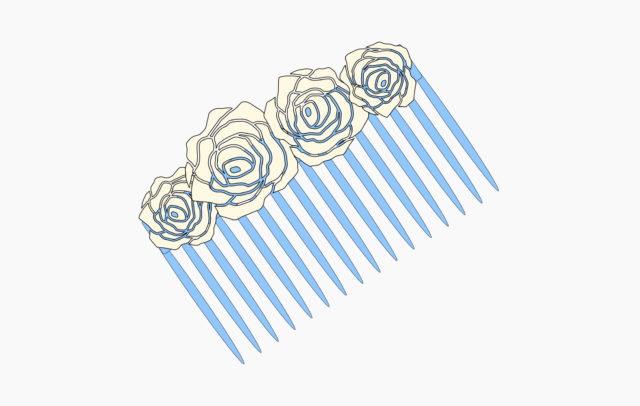By Ana Ruiz Brictson | Staff Writer
As couples plan their weddings, few know where their must-have traditions came from. Knowing the history of some of these traditions can help to determine if they are worth including in the celebration.
In ancient England, it was traditional for wedding guests to rip off pieces of the bride’s dress or flower bouquet in hopes of good luck. Given it was a very violent tradition, brides began to toss their bouquets to a crowd to avoid the cat fights.
Back in the 14th century in France, it was a tradition to prove to friends and family the marriage had been consummated after the wedding through the garter. Nowadays, the garter is worn above the right leg’s knee and is removed by the groom with either hands or teeth and then tossed at the groomsmen for good luck.
Something old, something new, something borrowed, something blue
Bringing something old can include anything that ties the bride to her family to represent the past she has with her family.
Bringing something new represents the new life that the couple is going to embark on together.
The idea of having something borrowed is to have a friend or family member who is in a happy relationship lend anything to the engaged couple for the wedding in order to transfer the good luck and happiness they share and to begin a good marriage.
The color blue may represent love, purity, faithfulness and happiness. The bride usually wears either blue jewelry or may have something written on her shoe in blue.
The role of the maid of honor and bridesmaids is mainly to assist the bride. Its history, which can be traced back to Roman law, is there used to be a requirement of at least 10 people having to be witnesses for the marriage to be possible. The reason why the bridesmaids are mainly required to dress the same is to protect the couple from the evil spirits that would show up at the time of the wedding. The identical dressing would fool the evil spirits into not knowing who was actually getting married.
As for the maid of honor, the choice of the bride mainly relies on who their closest friend is and their job is mainly to assist and help the bride get everything ready for the wedding.
As it continues to be a tradition today, the groom would have to ask for permission from the bride’s family in order for the wedding to be able to be possible. Back in Biblical times, if the groom did not receive the family’s blessing, the groomsmen would come in to take the bride away and have the wedding be a “wedding-by-capture.”
During the 16th century, the best man would not be the groom’s best friend, but rather the best swordsman. This was to protect and prevent for anyone to take away the bride or to even let the bride herself run away.
In 1840, Queen Victoria of England began the tradition of wearing a white wedding dress. Before the 19th century, there was no specific color associated with the bride, she would usually wear the best dress she owned. Given her wedding to Prince Albert was very public, it became a tradition for the bride to wear the color white.
Although the trend began in the 19th century, many western societies believe the color white can signify purity.
Walking down the aisle with father
In history, father’s used to “own” their daughters and the practice of giving them away at the end of the aisle stood to receive a dowry in exchange. Nowadays it is used to show respect and love for the new couple.



